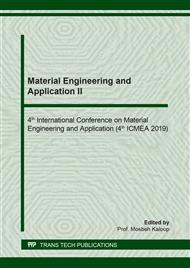p.232
p.238
p.243
p.248
p.254
p.259
p.266
p.273
p.278
Analysis of Physical and Mechanical Properties of Backhoe’s Bucket Repairment with Cladding Methode
Abstract:
Buckets are the most important component in backhoe construction, the bucket functions as a digger and carrier component in an excavator. Due to the heavy working media of the excavator so that this component is the most easily damaged part, damage that often occurs is wear caused by friction arising so that the thickness of the bucket is reduced which can eventually cause cracks in the bucket and in continuous use can cause the bucket to crack and broken. Cladding method is done to shorten the time or simplify the repair process is to directly patch the damaged part with a welding layer and then do the grading using a grinding. This study aims to determine the physical and mechanical properties of the material from the cladding process when compared with the raw material, the variations used are raw material, cladding with filler welding, and cladding with plates. The welding process is carried out with GMAW (Gas Metal Arc Welding) and low carbon steel. Welding results will be tested tensile strength, bending strength , impact test, hardness test, chemical composition, and corrosion rate. From the hardness test results showed that the weld metal from plate variation has the highest hardness value of 443 VHN. From the results of tensile testing the basic material has the highest value with 359.08 MPa. From the bending test results the highest value obtained from filler verification with 494.01 Mpa and the highest impact price obtained from the plate variation cladding method with a value of 1.49 J / mm2
Info:
Periodical:
Pages:
254-258
Citation:
Online since:
May 2020
Authors:
Keywords:
Price:
Сopyright:
© 2020 Trans Tech Publications Ltd. All Rights Reserved
Share:
Citation:


